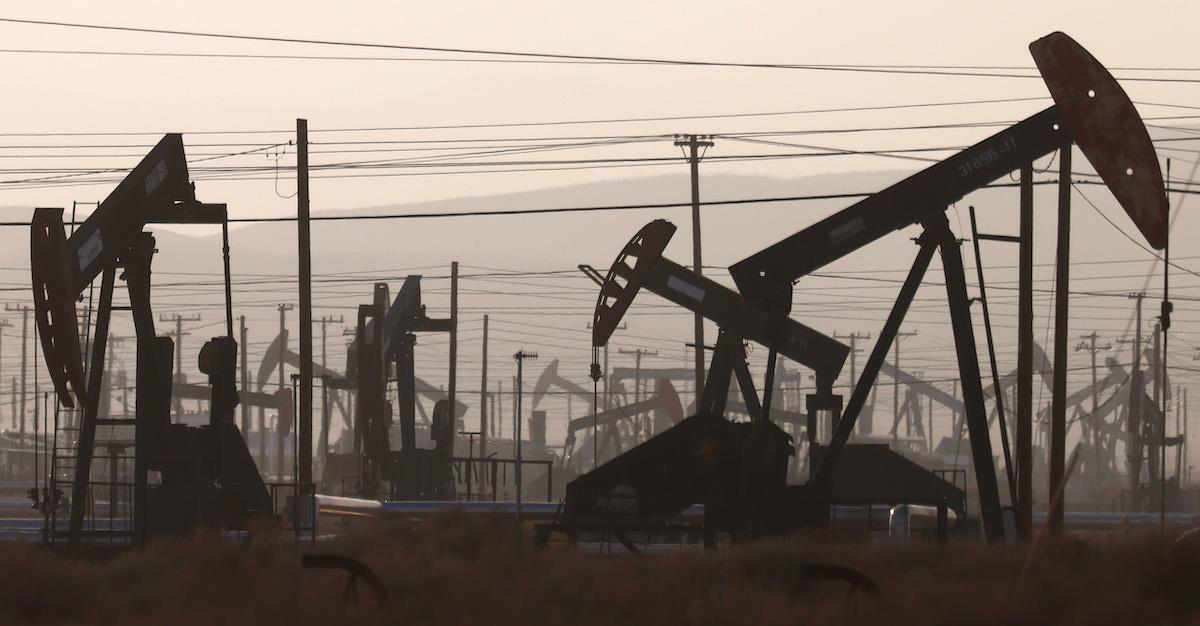China’s Methane Cloud Serves as a Daunting Reminder of the Country’s Reliance on Coal
Published Jan. 20 2022, 2:33 p.m. ET

Over the last few years, China has suffered quite a bit from the effects of climate change. The city of Zhengzhou endured fatal floods, major cities have faced ongoing power outages, and the COVID-19 pandemic has ravaged entire communities. All things considered, one would think more serious actions would be taken to curb the use of non-renewables, but the methane cloud that's formed over China's coal producing region says otherwise.
In November 2021, the U.S. Department of State published the US–China Joint Glasgow Declaration on Enhancing Climate Action in the 2020s, which states that both countries will work in tandem to monitor and limit methane emissions over the next decade.
"The United States and China recall their firm commitment to work together and with other Parties to strengthen implementation of the Paris Agreement," it promises.
"Moving forward, the United States and China welcome the significant efforts being made around the world to address the climate crisis," the declaration continues. "They nevertheless recognize that there remains a significant gap between such efforts, including their aggregate effect, and those that need to be taken to achieve the goals of the Paris Agreement. The two sides stress the vital importance of closing that gap as soon as possible, particularly through stepped-up efforts."

What to know about China's coal-induced methane cloud:
Satellite images taken on Dec. 21, 2021 detected a massive methane cloud hovering over China's Shanxi province, which is best known for coal production, according to Mining.com. The cloud, which was likely formed from several coal mines, estimated to emit 68 metric tons of methane per hour. Likewise, a methane cloud spotted at the beginning of that same month likely produced 53 tons per hour. If both releases combined for an hour, that would be equal to yearly emissions from 6,000 U.K. cars.
Coal mine methane emissions are long-lasting, and unfortunately, methane is the dirtiest greenhouse gas of them all. Clouds form because workers have to ventilate mine shafts, to reduce the risk of fires and explosions. It can be difficult to measure emissions in areas like these, where there are so many mines next to each other. This makes it even harder to monitor for the sake of the environment as well as nearby communities. And, like the U.S., China isn't required to report methane releases.
Since reports aren't required, scientists are trying to estimate how much methane is being emitted from operations like these. Dutch researchers who analyzed Australia's Bowen Basin mines believe there's serious underreporting of methane emissions, which means if we want to tackle the climate crisis, policies are going have to change in terms of requiring regular reports, and instilling regulations.

How will China control its methane emissions?
Many hope China and the U.S. will stick to their Glasgow declaration. Both countries have noted how greenhouse gases, specifically methane, affect the planet. While the U.S. has released emission-cutting action plan, per China Dialogue, China reportedly has plans to create an emissions reduction plan. That, however, has yet to be released.
China refrained from joining the Global Methane Pledge signed by the U.S. and EU ahead of COP26, because reducing methane emissions from coal mines is reportedly more difficult and expensive. However, China has promised to develop a National Action Plan on methane ahead of COP27. So until coal mines are shut down and the country starts to transition to alternative energy sources, as they have in other countries, this may continue to be a serious issue in China.